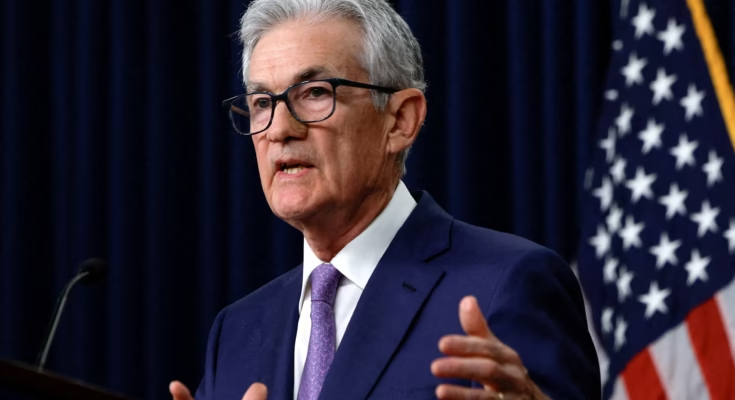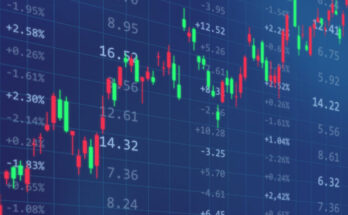Global equity markets climbed on Friday, August 8, 2025, fueled by growing expectations that the U.S. Federal Reserve will soon cut interest rates. The rally extended across Asia, Europe, and Wall Street, as investors positioned themselves for what could be a major shift in global monetary policy.
Adding to the market momentum, gold prices hit a record high, reflecting both optimism about looser financial conditions and hedging against potential economic uncertainty.
What’s Driving the Rally?
The optimism stems from a mix of economic indicators and central bank signals:
-
U.S. inflation data showed a continued slowdown in July, now at 3.1% year-over-year.
-
Job growth in the U.S. remains solid but slightly cooled, giving the Fed room to ease.
-
Federal Reserve officials hinted that a rate cut is “on the table” if economic momentum weakens further.
Market Performance Highlights
📈 United States
-
S&P 500: +1.4%
-
Dow Jones: +1.1%
-
NASDAQ: +1.7% (tech stocks led the charge)
📈 Europe
-
FTSE 100 (UK): +0.8%
-
DAX (Germany): +0.6%
-
CAC 40 (France): +0.7%
📈 Asia-Pacific
-
Nikkei 225 (Japan): +1.2%
-
Hang Seng (Hong Kong): +1.5%
-
Sensex (India): +0.9%
Gold Hits New Record
Spot gold surged to $2,475 per ounce, surpassing its previous record set earlier this year. Analysts attribute the rise to:
-
Expectations of lower interest rates, which reduce the opportunity cost of holding gold.
-
Continued geopolitical risks, including tensions in the Middle East and Eastern Europe.
-
Central bank purchases, especially from emerging markets.
Currency Markets React
The U.S. dollar fell against major currencies as rate cut expectations grew:
-
Euro climbed to $1.12
-
British pound rose to $1.33
-
Japanese yen strengthened to ¥141.2 per dollar
Weaker dollar trends tend to support commodity prices, especially gold and oil.
Investor Sentiment
Bullish Signals
-
Tech, consumer discretionary, and industrial stocks saw strong inflows.
-
Emerging market equities benefited from weaker dollar trends.
-
Corporate bond spreads narrowed, suggesting increased investor confidence.
Cautious Notes
Some strategists warn that the market may be pricing in too much optimism about how quickly and deeply the Fed will cut rates.
The Federal Reserve’s Dilemma
The Fed faces a balancing act:
-
Cutting too soon could reignite inflation.
-
Waiting too long risks tipping the economy into recession.
Upcoming Jackson Hole Economic Symposium speeches from Fed Chair Jerome Powell will likely be scrutinized for clues.
Global Ripple Effects
A Fed rate cut would:
-
Make U.S. borrowing cheaper, boosting consumer spending and business investment.
-
Likely weaken the dollar, helping U.S. exporters but pressuring import costs.
-
Encourage capital flows into emerging markets, potentially boosting their currencies and equity markets.
Key Sectors to Watch
-
Technology – Expected to benefit most from cheaper capital and strong consumer demand.
-
Financials – Mixed impact; lower rates reduce lending margins but may boost loan demand.
-
Real Estate – Likely to see renewed investor interest as mortgage rates fall.
-
Precious Metals – Gold and silver could see further price increases.
Risks on the Horizon
-
Geopolitical Tensions: Ongoing conflicts in Gaza, Ukraine, and trade disputes could undermine growth.
-
Inflation Flare-Ups: Supply shocks in energy or food could derail rate cut plans.
-
Overbought Markets: A rapid rally may lead to sharp corrections if expectations are not met.
Conclusion
Global markets are embracing the prospect of a friendlier Federal Reserve, with equities climbing and gold soaring to new heights. Yet, the road ahead depends heavily on the Fed’s next moves — and whether inflation stays tame.
Investors should remain watchful, as monetary policy pivots can create both opportunities and sudden risks.
FAQs
Q1: Why did gold prices hit a record today?
Lower rate expectations reduce the opportunity cost of holding gold, while geopolitical risks keep demand high.
Q2: Is a Fed rate cut guaranteed?
No, but softer inflation data and cautious economic signals make it increasingly likely.
Q3: How do lower rates affect stocks?
They reduce borrowing costs, boost corporate profits, and encourage more investment in equities.
Q4: Which markets benefit most from a weaker dollar?
Emerging market equities and commodities typically gain when the dollar falls.



